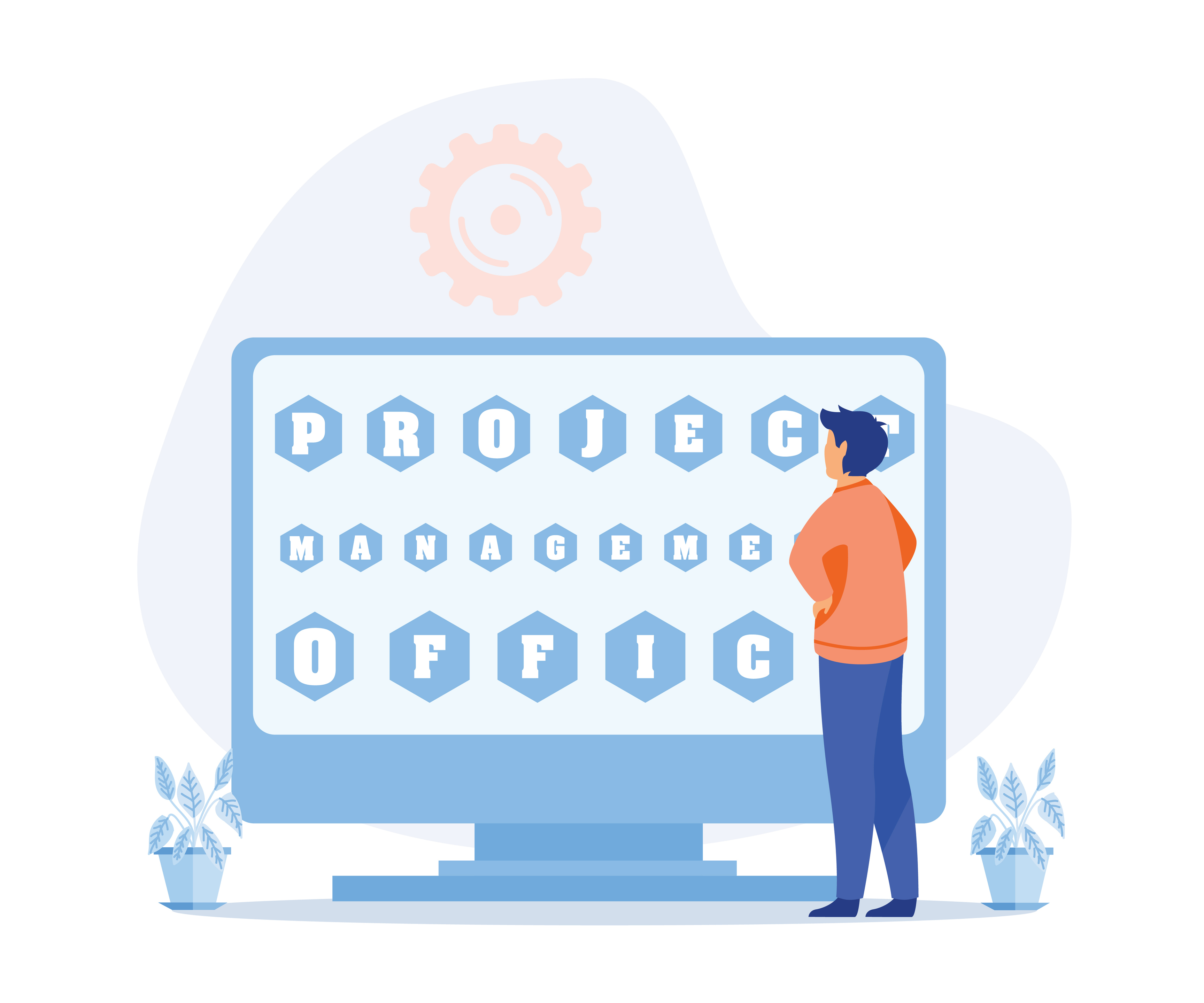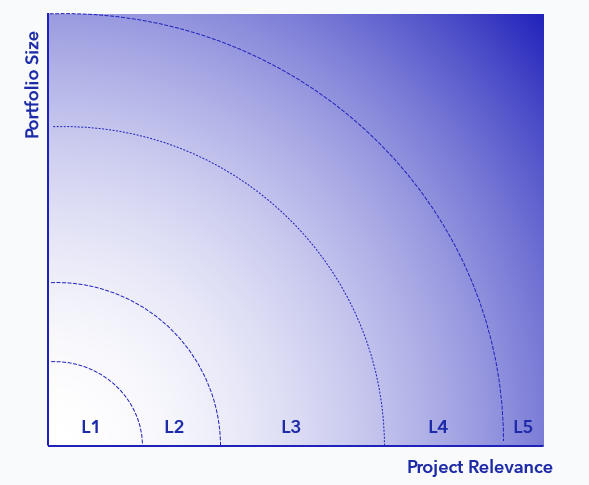The role of Project Management Offices (PMOs) cannot be overemphasized. But not all PMOs are alike, quite the opposite. For one, they tend to differ quite a bit in their maturity. But what is PMO maturity - and why should you even care about the maturity level? Let's take a look, shall we?
Are you curious to learn more about project portfolio management?
Our article "Project Portfolio Management - An Introduction For Practitioners With Little Time On Their Hands" explains the facets of this specialist area in detail.
What Are PMO Maturity Levels?
If you come across "The PMO Maturity Model" people often refer to the Organizational Project Management Maturity Model (OPM3), initially brought forward by the Project Management Institute (PMI). However, you can find numerous models out there in the project management and project portfolio management world. More or less regardless of the model in question, they all tend to provide a structured framework designed to evaluate and gauge the maturity and capabilities of PMOs. They serve as a guide for organizations, offering a roadmap to advance their project (portfolio) management practices. The most commonly gauged dimensions include processes, governance, risk management, resources and capabilities, and organizational culture, to ascertain the maturity level and pinpoint areas requiring enhancement.
6 Common Models Drastically Oversimplified
The list of models seems to be ever-growing - and each maturity model is individual. It is truly beyond the scope of this article to outline them all. But to give you a very first feel, we happily provide you with some drastically oversimplified pointers to six models, we often find in the real world.
- Capability Maturity Model (CMM): most commonly used for software companies
- Project Management Maturity Model (PMMM): for anyone and based on the 10 knowledge areas of the Project Management Body of Knowledge (PMBOK®)
- Organizational Project Management Maturity Model (OPM3): also based on the PMBOK®. It is detailed and can be labor intensive, but any organization in any industry can use it.
- Berkeley Project Management Process Maturity Model: similar to PMMM
- Gartner Score Diagnostic Family: probably the most interactive model, aims at identifying the important areas of improvement
- Portfolio, Programme, and Project Management Maturity Model (P3M3®): the model if you look to improve true project portfolio management within your organization
Why Should You Take A Closer Look And Which Model Is The Best For Your Organization
Answering why you might consider taking a closer look at these models is simple: they try to offer a battle-proven way forward in advancing your organization's project (portfolio) management capabilities. No more guesswork. A clear roadmap. Who doesn't want that, right?
So... which model is the best for you?
This is more or less impossible to answer. Since it heavily depends on your organization, there is no simple way out of this puzzle. Take the time to thoroughly assess all available options and determine what aligns best with your company's specific business requirements.
Given that formal assessment of basically all models is conducted either through group and individual interviews or a comprehensive questionnaire, one good way to get a feel for the model, is to take a look at the questions asked. Ensure that the survey addresses relevant questions tailored to your industry and the specific challenges you aim to address. For companies seeking a strategic approach across multiple projects and programs, P3M3® could prove valuable. In contrast, the Gartner Score Diagnostic Family might be beneficial for those needing guidance in identifying areas for improvement.
Once you get a feel for the question, factor in the time and resources required for the assessment phase of a particular model. For instance, OPM3 assessments demand substantial effort, which could pose challenges for smaller organizations and teams.

There Are Numerous Models regarding PMO Maturity Levels Out There? Here, Have Another One.
Yes. We have another model for you. It is a non-scientific mix of many approaches. It reflects what we find in the real world. If anything, it tries to give you some quick pointers on where you may stand with your organization. Similar to other models, we differentiate six rough levels:
L0 – Nonexistent
At this level, there is no established PMO in the company. Project resources are allocated ad-hoc, and there are no uniform overarching processes. Budgets exist partially, but benefits are not planned and tracked. A tech solution is nonexistent.
L1 – Reactive
PMO is still not established, but there may be a PPM (Project Portfolio Management) leader managing resources for central projects. Work is ad-hoc, with initial processes for central projects, including reporting. Project budgets are planned and tracked, but benefits are not. Milestone planning is partially supported by a PMO tool, with no portfolio aggregation.
L2 – Developed
At this maturity level, a PMO is established, organizing all project resources for central projects. Processes, including reporting cycles, are in place. Initial portfolio analyses and decisions have been made. Projects have budget planning and tracking, and some parts have benefit or result planning. Milestone planning is mostly supported by tools, while budget planning is still done via spreadsheets. Portfolio aggregation exists for central projects.
L3 – Integrated
The PMO organizes all project resources, prioritizing and approving projects on a portfolio basis. Risks are monitored centrally, and reporting is centralized. Budgeting, tracking, benefit planning, and tracking are established for projects. A PMO tool is used for aggregating and controlling the project portfolio.
L4 – Efficient
A company-wide PMO, often referred to as "(E)PMO" for "Enterprise Project Management Office," is established and located in the organigram. Similar projects are combined into programs. Budgets and benefits are planned and tracked for all projects. All milestones, budgets, benefits, and risks are gathered and aggregated centrally in one tool. Additionally, the PMO supports all change management initiatives and processes within the company.
L5 – Optimized
At this level, a formal PMO career path and role profile exist. The (E)PMO centrally implements the strategic roadmap and the program roadmap. Budgets and benefits are planned and tracked for all projects. Different scenarios are created centrally across all programs and supported.
Is It Smart To Always Strive To The Highest Level?
Honestly? It is often not. Striving towards the highest level entails investment and commitment from the entire team. The type of investment and commitment that may overcompensate the benefits you reap from leveling up - and this strongly correlates both with organization size and hence the number of projects, and their relevance for the organization.

Small organizations with few projects running next to the daily business do not necessarily need a PMO to begin with. Larger companies, especially in times of transformation when numerous strategic projects are kicked off, truly benefit from a central management organ taking charge of keeping all loose project ends together.
Nordantech's Rule Of Thumb For PMOs
Have a rule of thumb:
- If you can't answer how many projects are currently running in your organization, and if you find it hard to answer what total budget is allocated, it is definitely time to talk about a PMO.
- If you either feel like there are more project ideas than time to make them happen or if you are unsure which projects to pursue to make your strategy a reality, it is time to talk about project portfolio management.
Learn more about these rules of thumb and the tasks of the PMO
Mix & Match: Maximizing Benefits Through Combinations in PMO Maturity Levels
In our interactions with customers in their project processes, we consistently observe the gradual maturation of PMOs over time. However, it's essential to recognize that a combination of different maturity levels is not only feasible, it is often the most effective approach. A common scenario involves a blend of several levels, e.g. L2, L3, and L4.
Consider the following example where a PMO has already been established in the company (L2). This PMO is responsible for prioritizing and approving projects on a portfolio basis, creating central reporting. Budgets and benefits are planned and tracked for all projects (L3). Moreover, there's a suitable tool in place that brings together and aggregates milestones, budgets, benefits, and other relevant information centrally (L4). This particular setup is a pretty lightweight approach that works for many companies out there.
PPM tool Falcon: Your solution for lean project portfolio management
Do you already use a PPM tool for your project portfolio management in your company? At Nordantech, we have developed Falcon: An intuitive and streamlined project portfolio management software for complex project portfolio management. As a market leader in the strategy and transformation sector, Falcon makes it easier for PMOs, leading consultants and private equity firms to plan, manage and report on their most important projects and processes.
Would you like to find out more about our PMO tool Falcon?

